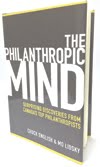When it comes to any e-communication, content trumps design every time. As a lover of design and someone who has earned his living providing design services, it pains me to have come to that conclusion but I believe it is undeniable.
I am talking about the full gamut of e-communication from websites to e-newsletters to social networking applications. In every case, if the content isn't valuable - if it doesn't inform, entertain, inspire, or somehow engage the reader/visitor/follower, design - even good design - cannot save it.
Proof of this abounds. Many of us still receive text based e-newsletters that we read every time because the content is valuable. The most watched You Tube items are often shaky, amateur video. Blogs, almost by definition, succeed or fail on the basis of their content. And, there is little room for design in a 140 word Tweet. Even as it relates to websites, where good design is probably most important, content is king. People look at sites quickly, scanning for the essential information. What's this organization (cause) all about? What do they do? Am I interested? You've probably noticed that Flash introductions are being used much less often and that the trend is to cleaner, less complicated layouts. In the extreme I would contend that a badly designed website with great content will get more traffic and achieve more than the converse.
To be clear, content is not just narrative copy. It includes video, images, testimonials, links and perhaps even embedded applications.
All of this is not to say that design is unimportant. Perhaps, it just better defines the role of design in these applications which is to make it easier and more likely for the reader to absorb the content. Good web and other e-design puts the content on a pedestal.
What are the practical implications? When developing an e-application whether its the website, a Facebook page, a YouTube channel or a blog, before you call in the design team, think about content first. In particular:
- Does it make the organizational MVP (Mission, Values, Philosophy) clear? Even better, does it provide a sense of direction or movement? Does it make the aspirational inspirational?
- Is it organized intuitively so that it's easy for the reader to see what's available and navigate easily.
- Finally, does it guide the visitor where you want him or her to go? That could mean making a donation, providing information, adding their name to a petition or printing a document. Make sure the content is driving the goals you have established for your e-application.
If you recognize the true superiority of content over design and apportion resources accordingly, there is no doubt you will make your fundraising marketing work better.





